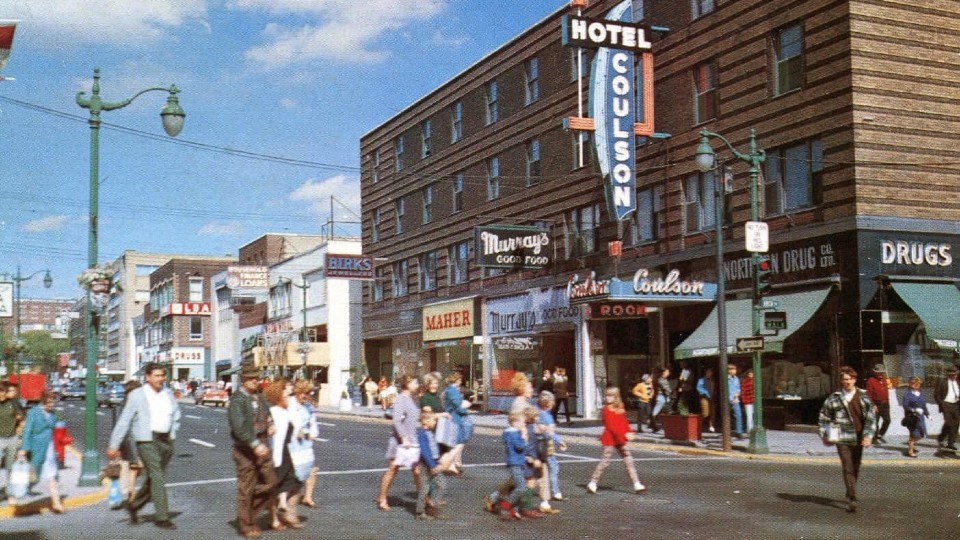The growing popularity of downtown's outdoor restaurants and pubs, many which extend out to the street, suggests the time might be right to consider restricting motor traffic to create a pedestrian mall on a temporary or part-time basis.
But in the summer of 1974, Sudbury wasn't ready to embrace the idea when Durham Street was closed to traffic for a five-month trial.
Worried about the impact of the City Centre Mall, which opened in 1971 — and which became the Rainbow Centre and is now Elm Place Mall — and New Sudbury Centre, which opened in June 1974, were having on downtown businesses, the city approved spending $80,000 for flower beds, tree saplings and picnic tables for placement on Durham Street from Elgin to Larch streets.
Downtown businesses agreed to sign a waiver, good to Oct. 15, 1974, not to sue for loss of revenue due to cutting off motor traffic.
City planners looked to the success of Ottawa's Sparks Street mall in the late 1960s. It was one of the first pedestrian malls in North America. (By 2000, Sparks Street was no longer a thriving shopping area and there are repeated calls for urban renewal.)
The reaction to Sudbury's "Durham Street mall" was mixed.
"Move it out and don't bring it back," one influential store owner told reporter Neil Stevens. (The reporter left Sudbury shortly afterward to begin a 30-year career as an award-winning sports writer with Canadian Press.)
Other negative comments included, "We want traffic. Not people eating lunch on Durham Street."
"It's a big waste of taxpayers' money."
"For $80,000 all it is doing is attracting a bunch of hippies."
"Let people go to the park (Memorial), if they want to sit down."
One retailer said, "I'm moving in the fall and the mall helped me make up my mind."
Some store owners were supportive of the mall's "peaceful atmosphere," and saw an increase in business. They gave suggestions for improvement such as a farmers' market and arts and crafts displays.
An idea for a beer garden for special occasions got the following response from a merchant: "Not over my dead body!"
Most of the pedestrian malls established in Canadian and American cities to fight competition from shopping centres were eventually partially or fully reopened to traffic.
Street malls were not necessarily bad for business and shoppers generally liked them. But the four-season comfort of indoor malls offering what seemed an infinite selection of products and free parking won over consumers, at least for a while.
Problems optimistic planners had hoped to fix only got worse. Disenchanted downtown merchants moved into shopping centres or strip malls resulting in empty storefronts, and there were concerns such as unlicensed vendors, loss of parking, loitering and criminal drug activity.
Successful street malls in places such as Denver, Colorado, are well-designed and located in historic areas of communities where tourists like to visit. They are close to public transit and have a mix of shops, services, restaurants, pubs, offices and play spaces for families. There are 5,700 residential units and several hotels along Denver's 16th Street mall.
As people come of out COVID-19 hibernation with a renewed interest in sustainability and walkability, the popularity of outdoor dining, and the fact consumers can buy what they need online, but want to support local merchants and shopping adventures, temporary downtown street closures during the summer are being revisited in cities such as Vancouver, St. Catharines and St. John's.
Vicki Gilhula is a freelance writer. She is a former editor of Northern Life and Sudbury Living magazine, and has a special interest in local history. Then and Now is made possible by the Community Leaders Program.
Source: The Sudbury Star, Aug. 17, 1974, Merchants differ on value of mall, by Neil Stevens
